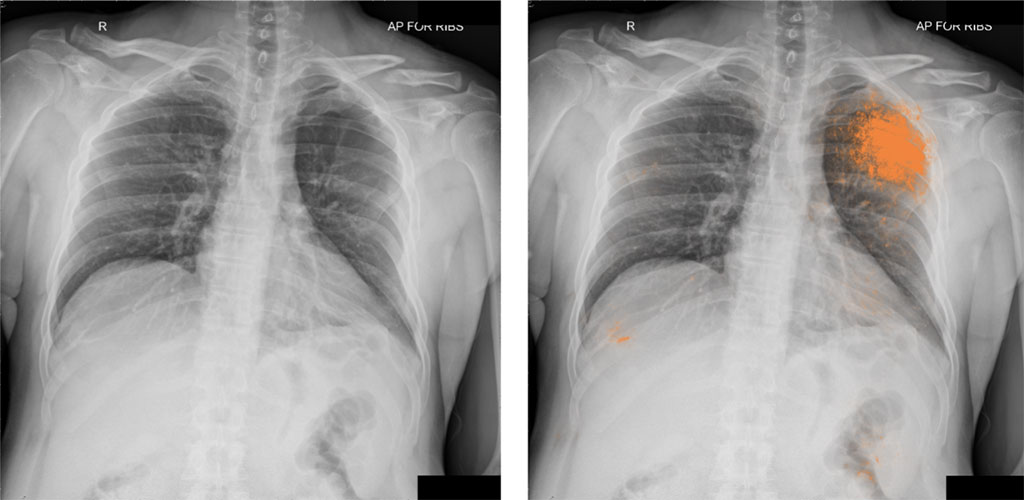Deep Learning Model Accurately Classifies Chest X-Rays
By MedImaging International staff writers
Posted on 16 Dec 2019
Combining deep learning (DL) models with adjudicated image labels can help classify clinically important findings on chest X-rays, claims a new study.Posted on 16 Dec 2019
Researchers at Google Health (Mountain View, CA), Apollo Radiology International (Hyderabad, India), California Advanced Imaging (Novato, USA), and other institutions have developed DL models that can accurately classify four clinically important chest X-ray findings - pneumothorax, nodules and masses, fractures, and airspace opacities. The target findings were selected in consultation with radiologists and clinical colleagues, so as to focus on conditions that are both critical for patient care, and for which chest X-ray images alone are an important and accessible first-line imaging study.

Image: Chest X-ray of a pneumothorax missed by radiologist (L), but identified by the DL model (R) (Photo courtesy of Google Health)
To do so, they used two large data sets. The first included 759,611 images from the Apollo Hospitals network (Hyderabad, India), and the second was drawn from a publicly available set of 112,120 images. Natural language processing and expert review of a small subset of images were then used to provide labels for 657,954 training images, with reference standards defined by four radiologists. The results showed that for all four radiologic findings, and across both datasets, DL models exhibited radiologist-level performance. The study was published on December 3, 2019, in Radiology.
“Achieving expert-level accuracy on average is just a part of the story. Even though overall accuracy for the DL models was consistently similar to that of radiologists for any given finding, performance for both varied across datasets,” said senior author Shravya Shetty, MSc, technical lead of Google Health. “This highlights the importance of validating deep learning tools on multiple, diverse datasets, and eventually across the patient populations and clinical settings in which any model is intended to be used.”
With millions of diagnostic examinations performed annually worldwide, chest X-rays are an important and accessible clinical imaging tool for the detection of many diseases. However, their usefulness can be limited by challenges in interpretation, which requires rapid, thorough evaluation of a two-dimensional image depicting complex, three-dimensional (3D) organs and disease processes. As a result, early-stage lung cancers or pneumothoraces (collapsed lungs) can often be missed, potentially leading to serious adverse outcomes.
Related Links:
Google Health
Apollo Radiology International
California Advanced Imaging




 Guided Devices.jpg)









